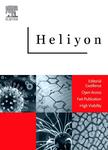版权所有:内蒙古大学图书馆 技术提供:维普资讯• 智图
内蒙古自治区呼和浩特市赛罕区大学西街235号 邮编: 010021
T=题名(书名、题名),A=作者(责任者),K=主题词,P=出版物名称,PU=出版社名称,O=机构(作者单位、学位授予单位、专利申请人),L=中图分类号,C=学科分类号,U=全部字段,Y=年(出版发行年、学位年度、标准发布年)
AND代表“并且”;OR代表“或者”;NOT代表“不包含”;(注意必须大写,运算符两边需空一格)
范例一:(K=图书馆学 OR K=情报学) AND A=范并思 AND Y=1982-2016
范例二:P=计算机应用与软件 AND (U=C++ OR U=Basic) NOT K=Visual AND Y=2011-2016

Long Short-Term Memory Recurrent Neural Networks (LSTM) are used to build surrogate models to forecast time-series blade loads for both fixed and floating offshore wind turbines. In this paper, we train surrogate models on datasets generated with OpenFAST on the IEA-15MW-RWT under a range of metocean conditions. The aim of the surrogate models is to generate load forecasts inexpensively and accurately such that they can be used in a model predictive controller. Two cases are investigated with different model inputs: one with only measurements available to typical PI controllers and another one with additional wave elevation and deflection measurements (alongside the endogenous variable). The model performances are evaluated and compared. It was found that for the fixed turbine, the models predicted all three blade loads to a high degree of accuracy. The floating turbine surrogate models performed relatively worse, but edgewise and pitching moments are still reasonably accurate. The surrogate model forecasts the flapwise moment to a satisfactory accuracy only in 58% out of 400 test cases. The addition of wave elevation and blade deflection features did not significantly improve the prediction performance of the surrogate, demonstrating that just the information used by current PI controllers may be sufficient for forecasting blade loads.




电话和邮箱必须正确填写,我们会与您联系确认。
版权所有:内蒙古大学图书馆 技术提供:维普资讯• 智图
内蒙古自治区呼和浩特市赛罕区大学西街235号 邮编: 010021

暂无评论